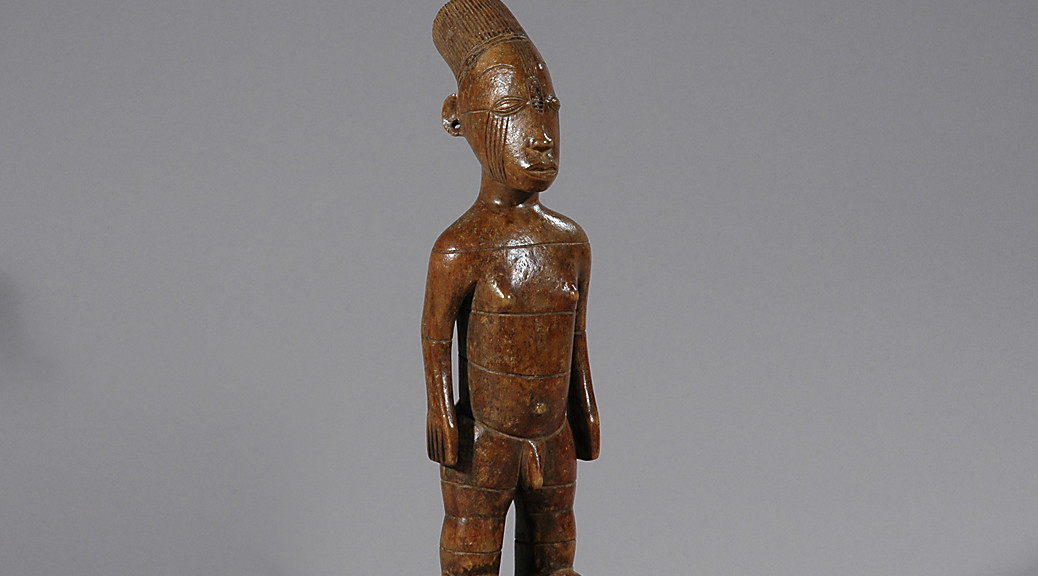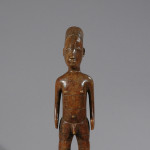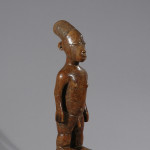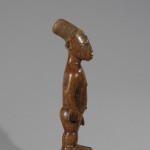HCC 0613-2
Medje Mangbetu Male Figure, Democratic Republic of Congo.
Wood, honey brown, slightly shining patina, black paint
H: 32 cm (12,6″), W: 9 cm ( 3,5″)
A perfect standing male figure in a classic Medie Mangbetu style of sculpture with beautiful chignon and body decorated with typical Medie Mangbetu markings. The lines on the body where not scarification, but where painted lines used during the ceremonies.
Medje tribe represents the Sultani of Medje and the Medje Mangbetu sculptures symbolize the ideal of male or female beauty. This beauty is translated by the elongated, wrapped head with an elaborate hairstyle (chignon) and by the geometric patterns and the body painting that are observed on the real individual in their personal appearance. Most of them portrayed existing people. Often male figures would have a hand in front of the sexual organ and in the back, but in this case the figure has free carved long arms flanking the body and the sex is covered by a small piece of barkcloth. The statue presented here is a rare example of an art seldom seen on the market. Most Mangbetu art was reserved for ruling class and was secular in nature. Figures like this one are believed to be ancestral portraits.
The 40,000 Mangbetu moved north east of the Democratic Republic of the Congo (DRC) several hundred years ago and live just south of the Zande and west of the Boa – two groups that also moved into the DRC from the same area. The Mangbetu are famous mostly for their clay mugs and musical instruments, with statues and other objects being rare. Most of their figural art is distinctive for the elongated heads – which is probably an influence from the ancient Egyptians that filtered south thousands of years ago. Mangbetu art is a royal art, so most objects that exist are elegant, refined, and of great beauty.
Age: Est. mid to second half of the 20th Century
Provenance: Private collection, Bruselles, Belgium
Click here for more information about the Mangbetu people
Request price for Mangbetu Figure




